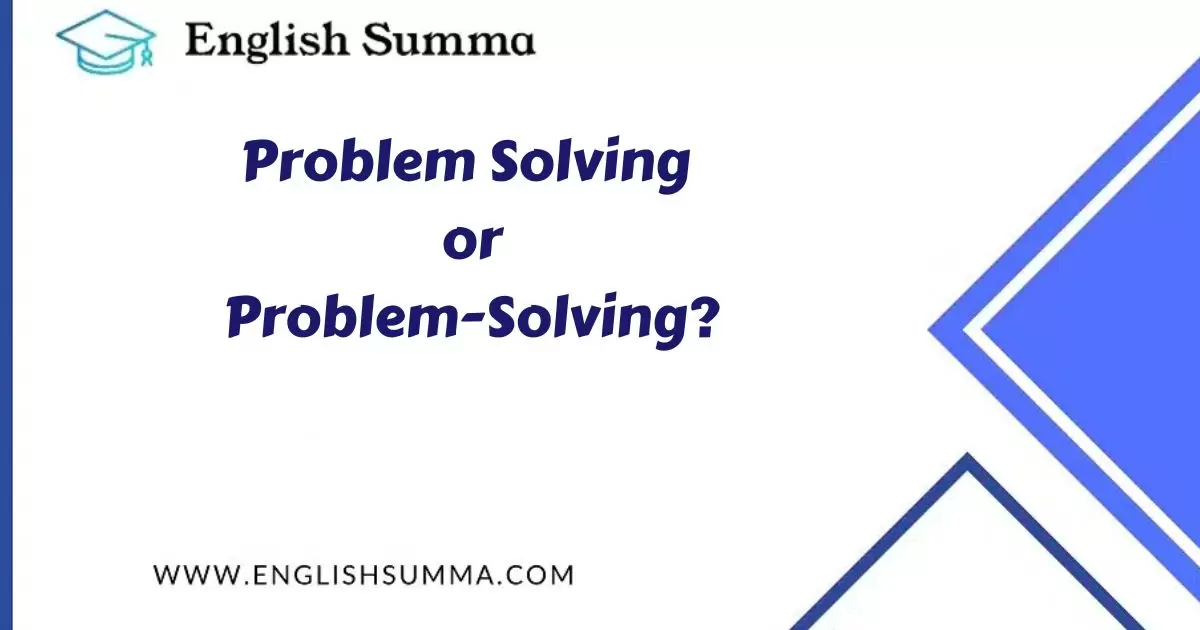In the labyrinth of English language intricacies, compound words often pose a perplexing puzzle. The case in point: Problem Solving versus “Problem-Solving.” The journey to unravel this linguistic enigma requires a nuanced understanding of compound word formation and usage.
Grappling with Compound Word Conventions
Compound words are formed when two or more words join forces to convey a unified concept. How these words coalesce can significantly impact clarity and comprehension. In the case of “Problem Solving,” the dilemma arises: should it be written as two separate words, hyphenated, or combined into one?
The Case for “Problem Solving”
In its simplest form, “Problem Solving” consists of two distinct words. This format emphasizes the individuality of “problem” and “solving,” portraying them as separate entities united in a singular endeavor.
For instance, consider the scenario of a team tasked with tackling various issues within a company’s operations. Each member contributes their unique perspective to the collective problem-solving effort, fostering collaboration and innovation.
Example:
Company X faced a decline in customer satisfaction ratings. Through collaborative problem solving, the team identified key pain points and implemented targeted solutions, resulting in a significant improvement in customer feedback.
Embracing the Hyphen: “Problem-Solving”
On the other hand, proponents of the hyphenated form argue for the cohesion and clarity it provides. “Problem-Solving” melds the components into a cohesive unit, underscoring the inseparable link between identifying issues and devising solutions.
Imagine a classroom setting where students engage in problem-solving activities. The hyphen underscores the symbiotic relationship between identifying challenges and implementing strategies to overcome them, fostering critical thinking and analytical skills.
Example:
The university offered a problem-solving workshop to assist students in developing effective strategies for academic success. Through interactive exercises and case studies, participants honed their analytical skills and gained confidence in tackling complex problems.
Navigating Ambiguity: The Challenges of “Problem solving”
However, the allure of efficiency can sometimes lead to ambiguity. Consider the amalgamation of Problem solving into a single word. While this format may streamline written communication, it risks obfuscating the distinct roles of “problem” and “solving.” Ambiguity arises, clouding the clarity of the intended message.
For instance, imagine receiving instructions for a “problem solving” workshop. Without clear delineation, participants may struggle to discern whether the focus lies on identifying issues or devising solutions, leading to confusion and inefficacy.
Example:
The ambiguous title of the seminar, “problem solving techniques,” left attendees perplexed about the workshop’s objectives. As a result, participants were unsure whether to focus on identifying problems or implementing solutions, hindering the effectiveness of the session.
Context is Key: Choosing the Right Form
In navigating the labyrinth of compound word usage, context emerges as the guiding beacon. Consider the audience, purpose, and tone of the communication. Are you addressing a formal business proposal or crafting informal brainstorming sessions? Each scenario warrants a nuanced approach.
For formal documents, adherence to established conventions may dictate the use of “Problem Solving” or “Problem-Solving” to maintain professionalism and clarity. Conversely, informal settings may embrace the flexibility of language, opting for the form that best resonates with the intended audience.
Conclusion:
In the grand tapestry of language, the debate between “Problem Solving” and “Problem-Solving” underscores the ever-evolving nature of linguistic conventions.
Whether you opt for the clarity of separate words, the cohesion of a hyphen, or the efficiency of a single word, the key lies in understanding the nuances of compound word formation and usage.
By embracing context, clarity, and purpose, we bridge the divide between tradition and innovation, paving the way for effective communication and collaboration in the realm of problem-solving.
Read More:

